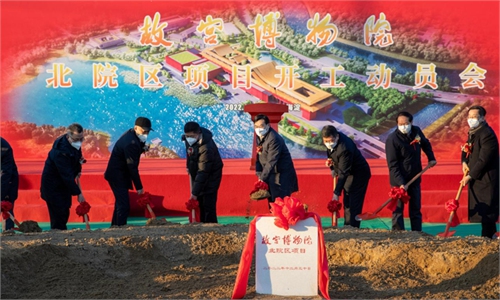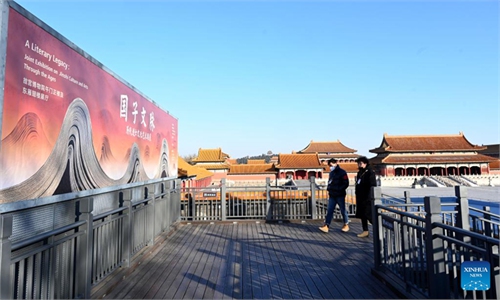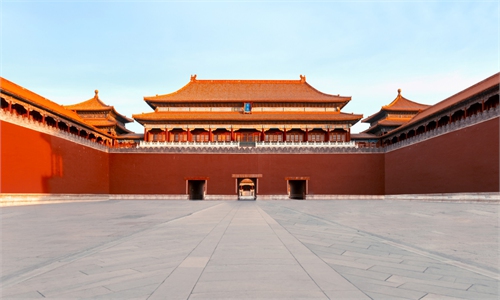ARTS / CULTURE & LEISURE
Palace Museum to build new 100,000-sqm hall to better display, store its millions of treasures
Out in the open
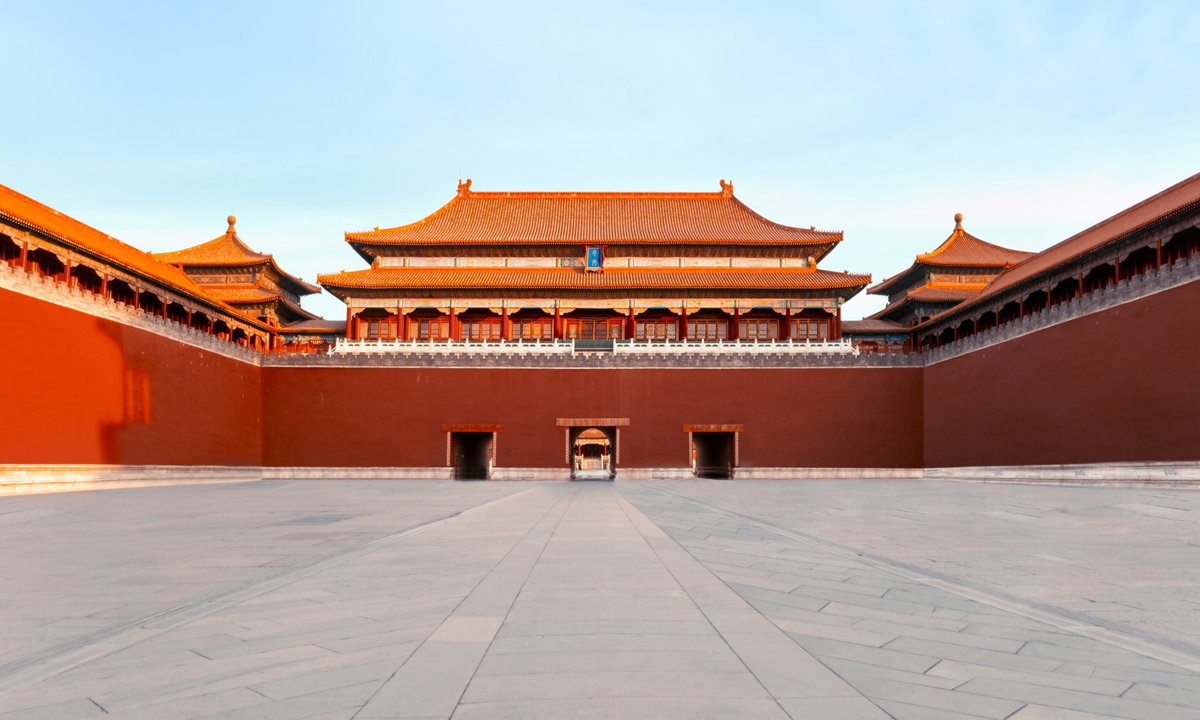
The Meridian Gate of the Palace Museum Photo: VCG
This is exciting news for global visitors and especially for enthusiasts of Chinese culture and history, who will be able to enjoy the Palace Museum treasures at a more spacious and modern venue in the near future, observers told the Global Times on Friday.
The new branch, mainly designed for the display, restoration, preservation and research of cultural pieces, is backed with an investment of 2.1 billion yuan ($309.58 million). The construction of the branch formally kicked off in December, after 10 years of preparations.
Wang Xudong, director of the Palace Museum, said in a previous interview with the Global Times that he hopes the hall will open to the public in 2025, the centennial year of the museum's founding. "[The new building is going to] further meet the public's different needs for education, appreciation, display and communication," said Wang.
Brand-new venue
Also known as Forbidden City, the always-popular Palace Museum, just like during every holiday in the past, was flooded with visitors during this Spring Festival vacation.
With a daily limit of 80,000 visitors, the museum has long been a must-see place for its time-honored imperial architectural complex and a large quantity of well-preserved cultural relics. According to Du Haijiang, the new venue project director, the museum currently exhibits some 10,000 pieces each year.
The number is no more than a drop in the bucket for the museum's 1,863,404 total pieces. The museum urgently needs a larger venue to display and store its precious collections.
In the past, many silk or cotton cultural relics were not able to be displayed because of the lack of proper conditions at the Palace Museum, Du told China Central Television (CCTV).
The new venue, with 12 exhibition halls covering 35,000 square meters in total, will exhibit 20,000 to 30,000 pieces of cultural relics every year, including extremely elaborated and fragile ones, said Du.
Apart from displaying more Palace Museum collections, the branch also serves as a better site for cultural relic repair and research, with its large space and lifting equipment specifically for moving and placing relics, according to Du.
Xu Yitao, an architectural archaeologist in Beijing, told the Global Times "it [the Palace Museum] as an ancient architectural relic and also a public cultural space faces potential safety harms, such as man-caused damage. The new branch is then going to be a way to protect this big physical ancient relic."
The new hall will be equipped with better lighting, sounding and electric facilities. Xu emphasized that its "modernized storage house" was particularly conducive to "maximizing the number of stored relics to be effectively exhibited.
"Many of the Palace Museum's treasures were once stored in a basement storage space, the new building will be a platform to display them to visitors, thus realizing their public educational value."
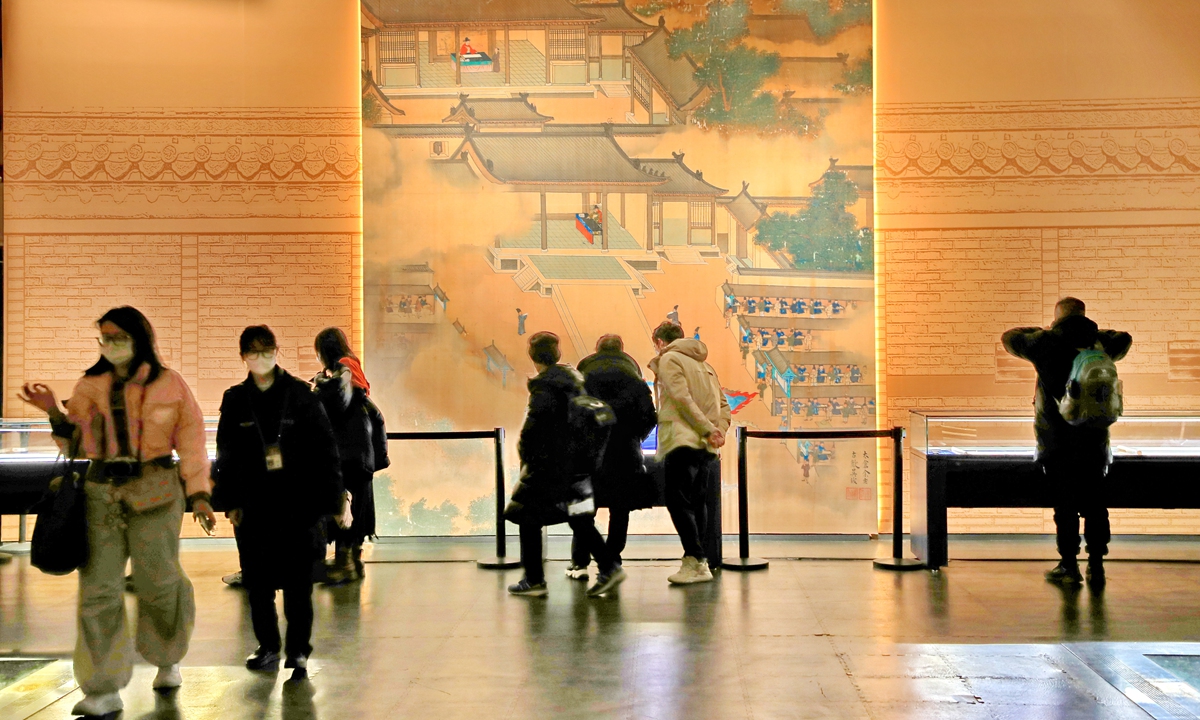
Visitors watch an exhibition at the Palace Museum during the Chinese New Year holidays on January 22, 2023. Photo: VCG
More experiencesLocated in the Xiyuhe Village of Haidian district, more than 30 kilometers away from the Palace Museum, the new hall is being built at an imperial Qing Dynasty (1644-1911) kiln site, where materials like bricks and tiles were made for constructing the Forbidden City.
The branch's appearance will contain many traditional Palace Museum elements, the museum staff said.
It is nonetheless a very modern and open site equipped with advanced facilities, and it pays attention to the interactive experience of visitors, such as watching restoration work being done on site.
The new building is designed to have a cultural relic exhibition center, a cultural relic restoration center, a horticulture center, an international cultural relic restoration platform, an intangible cultural heritage studio, as well as relic exhibition halls and turnover warehouses, CCTV reported.
Zhu Xinrui, a musicologist and curator in Beijing, told the Global Times that the Palace Museum's new branch is a "strategic move" for cultural promotion and commerce.
"Globally renowned institutions like it, even the British Museum, are always facing display inefficiency issues, so the expansion not only helps the institute to gain commercial success by embracing more visitors, but also helps it to brand itself as a cultural landmark," Zhu noted. .
The museum expert told the Global Times that with the increasing experiential trend growing in the industry, the new hall can be expected to include technology such as AI, and VR/AR devices.
The initial plan for the new branch project was launched in 2013, according to Wang. It took nearly ten years to prepare for the project after soliciting design proposals, implementing project initiation, and carrying out construction unit tendering.
The museum will soon issue an overall development plan for the new branch construction, and coordinate the relationship between the Palace Museum and the new exhibition hall to protect and display the traditional Chinese cultural pieces, Wang said.

